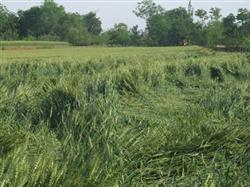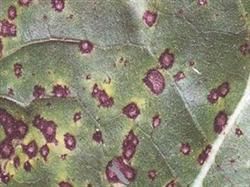Four determination of fertilization for High yield of Spring Maize

In recent years, due to the lack of organic fertilizer input and people's demand for increasing per unit yield, the amount of fertilizer applied to corn has increased significantly, and the application area of some high concentration compound fertilizers has also been expanded, which has effectively promoted the increase of yield. however, fertilizer damage at seedling stage, element deficiency or late de-fertilization and yield reduction often occur, so farmers urgently need to know the essentials of rational fertilization for spring corn. The following four decisions should be made in the fertilization of spring corn: first, to determine the appropriate proportion, we should determine a reasonable proportion of nitrogen, phosphorus and potassium fertilizer, and strive to balance fertilization. The ratio of absorbing nitrogen, phosphorus and potassium is about 10015. Combined with the characteristics of high utilization rate of nitrogen and potassium and low utilization rate of phosphorus, we should focus on nitrogen, phosphorus and potassium in fertilization, and the suitable proportion of nitrogen, phosphorus and potassium is about 100-60-40, and strive to implement formula fertilization. Second, to determine the amount of fertilizer for high yield, a reasonable amount of fertilizer should be determined, fertilizer should be determined by yield and fertilizer should be determined by soil fertility. 1 kg of nitrogen, phosphorus and potassium can increase the yield of grain by 810 kg. Generally, for every 100 kg of grain produced, the production capacity of the soil is calculated according to 60%, which requires 3.43 kg of pure nitrogen, 1.23 kg of phosphorus and 2.36 kg of potassium. Third, to determine the number of scientific fertilization and strive to be effective and reasonable in each fertilizer supply, and to achieve the combined application of base fertilizer, planting fertilizer and topdressing fertilizer. In general, based on the application of 1000-1500 kg organic fertilizer, 15 N-15 P-15 K (general type), 20 N-15 P-5 K (middle or more fertile land) or 16 N-12 P ~ 12 K (low yield or barren land) can be selected. Urea 20-25 kg at the trumpet stage and 10-15 kg at the panicle stage. 4. To determine the efficient fertilization method, a reasonable fertilization method should be adopted, and the application of base fertilizer should be the combination of organic fertilizer and chemical fertilizer, and the fertilization method can be spread before cultivated land or by machine; seed fertilizer should be strictly separated from seeds or strictly limited to diammonium phosphate, and the application amount per mu is less than 5 kg, which can be mixed with corn seeds. Topdressing should be in the jointing-booting stage, that is, the small trumpet mouth-big trumpet mouth stage, 10-15 cm from the base of the stem, 10-15 cm deep on the mechanical side, or human, Chuli trench application, hole application and timely covering soil.
- Prev

Control techniques of diseases and insect pests of high-quality wheat in spring
1. Spraying 200ppm paclobutrazol solution 30 kg / mu during wheat emergence period could dwarf plants, enhance lodging resistance, cure wheat powdery mildew and improve nitrogen absorption and utilization. 2. The application of uniconazole is a new type of efficient plant growth regulator with biological activity.
- Next

Control of sunflower brown spot
Sunflower brown spot, also known as spot blight, occurs widely in China, which can cause seedling death in the early stage and premature leaf death in the later stage, which has a great impact on yield. At the initial stage of the disease, nearly round disease spots were formed on the cotyledons or young leaves, with a diameter of 2-6 mm. The spot is brown on the front, surrounded by a yellow halo.
Related
- The first cup of black tea in spring, the flavor and history of tea gardens in Kenya, Africa
- The computer can not only choose potatoes, but also grow tea rice. AI will grow winter oolong tea champion.
- It is not only the inflated tea bitten by insects, but also engraved with the four seasons tea in Beipu.
- The Oriental Beauty Tea Festival in Zhuxian County takes the stage at the weekend to experience the plus-size feast of oil tea.
- & quot; Oriental Beauty Tea & Exploration of Emei in Hsinchu, the hometown of quot;
- The new variety of strawberry "Tainong 1" dessert is the first choice with mellow aroma. Crimson gorgeous
- History of Tea in Taiwan: from Wild Inner Mountain to Export Tea Garden
- Two types of Taiwan Oriental Beauty Black Tea won the British three-Star Award for Childhood Tea Xiang Zhang Jiaqi changed from pilot to champion tea maker.
- Banana species and varieties: the planting history of Taiwan Xianren banana and dwarf banana is long, is banana disease resistant?
- Coffee planting Technology: Qianjie Coffee from Seedling to harvesting

